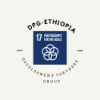Breadcrumb
From 1995/96-2015/16
The main objective of the Ethiopian government is poverty eradication and improvements in the well-being of people. Achieving this important goal requires monitoring and evaluation of the implementation of policies and programs which in turn require empirical studies based on nationally representative survey data. In other words, effective policies and interventions must be based on an understanding of how many poor people there are in the country, where they are located, and what their characteristics are. Poverty itself is a multidimensional phenomenon and so this analysis must capture not only poverty as measured by low consumption but also other features, such as health, nutrition, and schooling.
This report, therefore, provides results of the full-fledged poverty analysis so asto inform on the progress of the Ethiopian government towards reducing poverty over 1996-2016. There have been two major sources of information on poverty in Ethiopia: a series of WMSs, undertaken every three to five years since 1996, which track household characteristics and the non-income dimensions of poverty; the 5-yearly HICESs, which measures income poverty. CSA has been conducting the HICES every five years since 1996 in order to gather consumption expenditure data. So far, the HICES has been conducted five times: 1995/96, 1999/2000, 2004/05, 2010/11 and 2015/16. This report draws on these five surveys, which are the main official instruments for tracking poverty and welfare in Ethiopia, but with an emphasis on the results from the 2015/16 survey.
